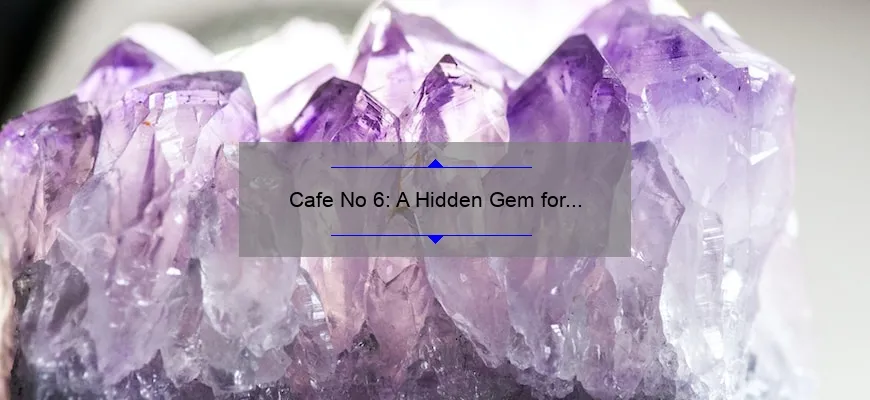- Short answer: Café au lait macules are light brown spots on the skin that commonly appear during childhood and often harmless. How to Treat Cafe au Lait Macules: A Step-by-Step Guide If you are one of many people who have noticed flat, light brown spots on your skin that resemble coffee with milk (cafe au lait in French), then you may be curious about how to treat these pigmented lesions. While cafe au lait macules often develop during childhood and do not typically cause any health concerns, some individuals find them aesthetically unappealing. Fortunately, there are a few different methods for addressing cafe au lait macules that can help to lighten or remove the discoloration. Keep reading to learn more about this common skin concern and how to treat it with our step-by-step guide. What Are Cafe au Lait Macules? Cafe au lait macules are benign hyperpigmented patches that usually appear at birth or develop during early childhood. They can vary in size from 1-2 millimeters up to several centimeters across and tend to grow proportionally as the child grows. For most patients, cafe au lait macules do not cause any physical discomfort or pain. While cafe au lait macules themselves do not pose any medical risks, they can sometimes indicate other underlying conditions such as neurofibromatosis type 1 (NF1). Therefore, if an affected individual has multiple large or numerous café-au-lait spots combined with other clinical features suggestive of NF1 – including freckling (neurofibroma), muscle weakness or stiffness due connective tissue disorders etc., he/she should immediately consult a dermatologist for evaluation. How Are Cafe Au Lait Macules Treated? There is no cure for cafe au lait macules since they represent intrinsic changes in melanin deposition within the base layer of your skin; however, various treatments exist which can lessen their appearance. These treatment options include: Laser therapy: Laser therapy is one method used by dermatologists when treating café-au-lait spots in adults. Lasers emit high-intensity light targeted specifically to brown pigments in the skin, resulting in thermal injury leading to their gradual clearance (usually after multiple sessions). As a bonus, laser therapy often involves little downtime and can typically be performed on an outpatient basis. Chemical peels: Chemical peels utilize acid solutions which are applied directly onto your skin by medical professionals. These acids work to exfoliate the outer layer of skin cells so that new supple and youthful-looking tissues grow over post-peel days. Peels containing glycolic acid or hydroquinone have been successful at helping fade café-au-lait spots; however they may also create other unwanted side effects such as irritation – therefore it is important for patients undergoing this treatment type under physician guidance only. Topical treatments: Certain skincare products used for treating hyperpigmentation contain hydroquinone, kojic acid, or Azelaic Acid which can help significantly lighten cafe au lait macules over time due to how these agents inhibit melanin production cycle within affected melanocyte populations resident inside a person’s dermal layers. C Frequently Asked Questions About Cafe au Lait Macules Answered Café au lait macules are flat, light brown discolorations on the skin that can appear at birth or develop over time. They are usually harmless and don’t require treatment unless they cause cosmetic concerns or grow larger than 1.5 centimeters in diameter. If you have café au lait macules or suspect you might, chances are you have some questions about them. Here’s a list of our most frequently asked questions, along with some witty and clever answers to satisfy your curiosity. Q: What causes café au lait macules? A: Café au lait macules are caused by an excess of melanin in the affected area of skin. Melanin is the pigment that gives color to our hair, skin, and eyes. In most cases, café au lait macules occur without any underlying medical condition or genetic predisposition. Q: Are café au lait macules hereditary? A: It’s possible for café au lait macules to be inherited from one or both parents. When they run in families, they’re usually part of an inherited disorder called neurofibromatosis type 1 (NF-1). People with NF-1 tend to have multiple café-au-lait spots as well as other symptoms like freckling under their arms or near their groin areas. Q: Do I need to get my cafe-au-lait spot checked out by a dermatologist? A: Most people with isolated coffee-colored spots don’t need further testing because they’re harmless and won’t turn into cancerous growths later on in life; but if you notice more than six such spots present since birth/childhood it could indicate a serious health condition requiring a thorough physical examination from your doctor – so it’s best consult professional advice just to stay safe! Q: Can I remove my cafe-au-lait spot myself using home remedies such as lemon juice applications? A: While there isn’t any specific manufactured cream as of now to treat café au lait macules, dermatologists do not recommend attempting to remove spots at home since this risk will leave behind scars and could lead to infections. It’s always better to speak with your doctor about the best treatment options available for you. Q: Will my cafe-au-lait spot become darker over time? A: Café-au-lait spots usually persist without changes throughout one’s life. There are a few reports where an existing patch may appear slightly darker or increase in size during pregnancy; but prompt medical attention is only necessary if there’s either growth/change in its appearance, especially if it appears asymmetric or has irregular borders — which could be signs of melanoma or skin cancer. In conclusion, while having café au lait macules can sometimes cause concern or self-consciousness amongst individuals due to their cosmetic effect on their skin – they’re typically harmless and require no intervention unless otherwise advised by your physician. Seek out professional advice from a healthcare provider instead of trying risky DIY remedies that will certainly cause more Tips for Preventing and Managing Cafe au Lait Macules at Home Cafe-au-lait macules are a common skin condition that affects individuals of all ages and belonging to different races. Characterized by light brown or tan-colored spots, often referred to as “coffee with milk” due to their color resemblance, they tend to cause cosmetic concerns in patients who have them. While cafe-au-lait macules don’t usually pose any health risks, some people want to reduce their appearance for aesthetic reasons. The good news is that you can take steps at home to prevent the development of new macules and manage existing ones effectively. Here are some tips for preventing and managing cafe-au-lait macules: 1) Protect your skin from the sun: Sun exposure can trigger the formation of cafe-au-lait macules on sun-exposed areas such as hands, face, neck, or limbs. Therefore it’s crucial always to protect your skin by wearing protective clothing like long-sleeved shirts or hats while outside during peak hours (10 am-4 pm), reapplying regular sunscreen after every two hours when outdoors; even on cloudy days too! 2) Minimize friction: Causes like rubbing clothes against your sensitive skin may stimulate melanocytes cell production that produces pigmentation resulting in more freckles developing into cafe au lait lesions over time. Avoiding tight-fitting jeans especially rubbing against waistlines, bras without enough space between layers underwired elasticity pushing down onto straps should limit friction sites present. 3) Ensure proper hygiene practices: Poor hygiene contributes significantly towards the formation of these stubborn marks which harbor oil accumulation & bacterial growth leading inflammatory responses accumulating cumulatively until causerous nodular tumers could form interrupting natural cellular housekeeping functions needed polishing clearer flawless appearance maintaining practical grooming styles. 4) Natural remedies like tea tree oil extract work wonders turning dark stains brighter compared potentially harmful bleaching agents instead directly addressing enhanced look increasing collagen fiber density lowering elastin diminished equally support in cellular immunity 5) Daily exercise routine: Regular exercises weight loss help to combat insulin resistance – studies show that obese individuals develop more skin pigmentations over non-obese participants. 6) Consult an expert dermatologist for further care since some melanoma cases could mimic cafe au latain macula causing need for biopsy to evaluate condition before implementing therapy involving targeted chemotherapy. In conclusion, avoiding sun damage while minimizing friction and practicing good hygiene should go a long way towards reducing the frequency of new café-au-lait lesions formation while adhering natural remedies including everyday activity such as walking or cycling discourage accumulated toxins enhancing fresh complexion complete with full collagen structure support all done at home safely conservatively. If you’ve still got questions on prevention and management techniques tailored towards your body type’s needs, please consult your trusted healthcare provider who is recommended Dermatology specialist certification level expertise explaining curative measures which may save time & lead optimal results!
- Short answer: Café au lait macules are light brown spots on the skin that commonly appear during childhood and often harmless.
- How to Treat Cafe au Lait Macules: A Step-by-Step Guide
- What Are Cafe au Lait Macules?
- How Are Cafe Au Lait Macules Treated?
- Frequently Asked Questions About Cafe au Lait Macules Answered
- Tips for Preventing and Managing Cafe au Lait Macules at Home
Short answer: Café au lait macules are light brown spots on the skin that commonly appear during childhood and often harmless.
How to Treat Cafe au Lait Macules: A Step-by-Step Guide
If you are one of many people who have noticed flat, light brown spots on your skin that resemble coffee with milk (cafe au lait in French), then you may be curious about how to treat these pigmented lesions. While cafe au lait macules often develop during childhood and do not typically cause any health concerns, some individuals find them aesthetically unappealing.
Fortunately, there are a few different methods for addressing cafe au lait macules that can help to lighten or remove the discoloration. Keep reading to learn more about this common skin concern and how to treat it with our step-by-step guide.
What Are Cafe au Lait Macules?
Cafe au lait macules are benign hyperpigmented patches that usually appear at birth or develop during early childhood. They can vary in size from 1-2 millimeters up to several centimeters across and tend to grow proportionally as the child grows. For most patients, cafe au lait macules do not cause any physical discomfort or pain.
While cafe au lait macules themselves do not pose any medical risks, they can sometimes indicate other underlying conditions such as neurofibromatosis type 1 (NF1). Therefore, if an affected individual has multiple large or numerous café-au-lait spots combined with other clinical features suggestive of NF1 – including freckling (neurofibroma), muscle weakness or stiffness due connective tissue disorders etc., he/she should immediately consult a dermatologist for evaluation.
How Are Cafe Au Lait Macules Treated?
There is no cure for cafe au lait macules since they represent intrinsic changes in melanin deposition within the base layer of your skin; however, various treatments exist which can lessen their appearance. These treatment options include:
Laser therapy: Laser therapy is one method used by dermatologists when treating café-au-lait spots in adults. Lasers emit high-intensity light targeted specifically to brown pigments in the skin, resulting in thermal injury leading to their gradual clearance (usually after multiple sessions). As a bonus, laser therapy often involves little downtime and can typically be performed on an outpatient basis.
Chemical peels: Chemical peels utilize acid solutions which are applied directly onto your skin by medical professionals. These acids work to exfoliate the outer layer of skin cells so that new supple and youthful-looking tissues grow over post-peel days. Peels containing glycolic acid or hydroquinone have been successful at helping fade café-au-lait spots; however they may also create other unwanted side effects such as irritation – therefore it is important for patients undergoing this treatment type under physician guidance only.
Topical treatments: Certain skincare products used for treating hyperpigmentation contain hydroquinone, kojic acid, or Azelaic Acid which can help significantly lighten cafe au lait macules over time due to how these agents inhibit melanin production cycle within affected melanocyte populations resident inside a person’s dermal layers.
C
Frequently Asked Questions About Cafe au Lait Macules Answered
Café au lait macules are flat, light brown discolorations on the skin that can appear at birth or develop over time. They are usually harmless and don’t require treatment unless they cause cosmetic concerns or grow larger than 1.5 centimeters in diameter.
If you have café au lait macules or suspect you might, chances are you have some questions about them. Here’s a list of our most frequently asked questions, along with some witty and clever answers to satisfy your curiosity.
Q: What causes café au lait macules?
A: Café au lait macules are caused by an excess of melanin in the affected area of skin. Melanin is the pigment that gives color to our hair, skin, and eyes. In most cases, café au lait macules occur without any underlying medical condition or genetic predisposition.
Q: Are café au lait macules hereditary?
A: It’s possible for café au lait macules to be inherited from one or both parents. When they run in families, they’re usually part of an inherited disorder called neurofibromatosis type 1 (NF-1). People with NF-1 tend to have multiple café-au-lait spots as well as other symptoms like freckling under their arms or near their groin areas.
Q: Do I need to get my cafe-au-lait spot checked out by a dermatologist?
A: Most people with isolated coffee-colored spots don’t need further testing because they’re harmless and won’t turn into cancerous growths later on in life; but if you notice more than six such spots present since birth/childhood it could indicate a serious health condition requiring a thorough physical examination from your doctor – so it’s best consult professional advice just to stay safe!
Q: Can I remove my cafe-au-lait spot myself using home remedies such as lemon juice applications?
A: While there isn’t any specific manufactured cream as of now to treat café au lait macules, dermatologists do not recommend attempting to remove spots at home since this risk will leave behind scars and could lead to infections. It’s always better to speak with your doctor about the best treatment options available for you.
Q: Will my cafe-au-lait spot become darker over time?
A: Café-au-lait spots usually persist without changes throughout one’s life. There are a few reports where an existing patch may appear slightly darker or increase in size during pregnancy; but prompt medical attention is only necessary if there’s either growth/change in its appearance, especially if it appears asymmetric or has irregular borders — which could be signs of melanoma or skin cancer.
In conclusion, while having café au lait macules can sometimes cause concern or self-consciousness amongst individuals due to their cosmetic effect on their skin – they’re typically harmless and require no intervention unless otherwise advised by your physician. Seek out professional advice from a healthcare provider instead of trying risky DIY remedies that will certainly cause more
Tips for Preventing and Managing Cafe au Lait Macules at Home
Cafe-au-lait macules are a common skin condition that affects individuals of all ages and belonging to different races. Characterized by light brown or tan-colored spots, often referred to as “coffee with milk” due to their color resemblance, they tend to cause cosmetic concerns in patients who have them.
While cafe-au-lait macules don’t usually pose any health risks, some people want to reduce their appearance for aesthetic reasons. The good news is that you can take steps at home to prevent the development of new macules and manage existing ones effectively.
Here are some tips for preventing and managing cafe-au-lait macules:
1) Protect your skin from the sun: Sun exposure can trigger the formation of cafe-au-lait macules on sun-exposed areas such as hands, face, neck, or limbs. Therefore it’s crucial always to protect your skin by wearing protective clothing like long-sleeved shirts or hats while outside during peak hours (10 am-4 pm), reapplying regular sunscreen after every two hours when outdoors; even on cloudy days too!
2) Minimize friction: Causes like rubbing clothes against your sensitive skin may stimulate melanocytes cell production that produces pigmentation resulting in more freckles developing into cafe au lait lesions over time. Avoiding tight-fitting jeans especially rubbing against waistlines, bras without enough space between layers underwired elasticity pushing down onto straps should limit friction sites present.
3) Ensure proper hygiene practices: Poor hygiene contributes significantly towards the formation of these stubborn marks which harbor oil accumulation & bacterial growth leading inflammatory responses accumulating cumulatively until causerous nodular tumers could form interrupting natural cellular housekeeping functions needed polishing clearer flawless appearance maintaining practical grooming styles.
4) Natural remedies like tea tree oil extract work wonders turning dark stains brighter compared potentially harmful bleaching agents instead directly addressing enhanced look increasing collagen fiber density lowering elastin diminished equally support in cellular immunity
5) Daily exercise routine: Regular exercises weight loss help to combat insulin resistance – studies show that obese individuals develop more skin pigmentations over non-obese participants.
6) Consult an expert dermatologist for further care since some melanoma cases could mimic cafe au latain macula causing need for biopsy to evaluate condition before implementing therapy involving targeted chemotherapy.
In conclusion, avoiding sun damage while minimizing friction and practicing good hygiene should go a long way towards reducing the frequency of new café-au-lait lesions formation while adhering natural remedies including everyday activity such as walking or cycling discourage accumulated toxins enhancing fresh complexion complete with full collagen structure support all done at home safely conservatively. If you’ve still got questions on prevention and management techniques tailored towards your body type’s needs, please consult your trusted healthcare provider who is recommended Dermatology specialist certification level expertise explaining curative measures which may save time & lead optimal results!








